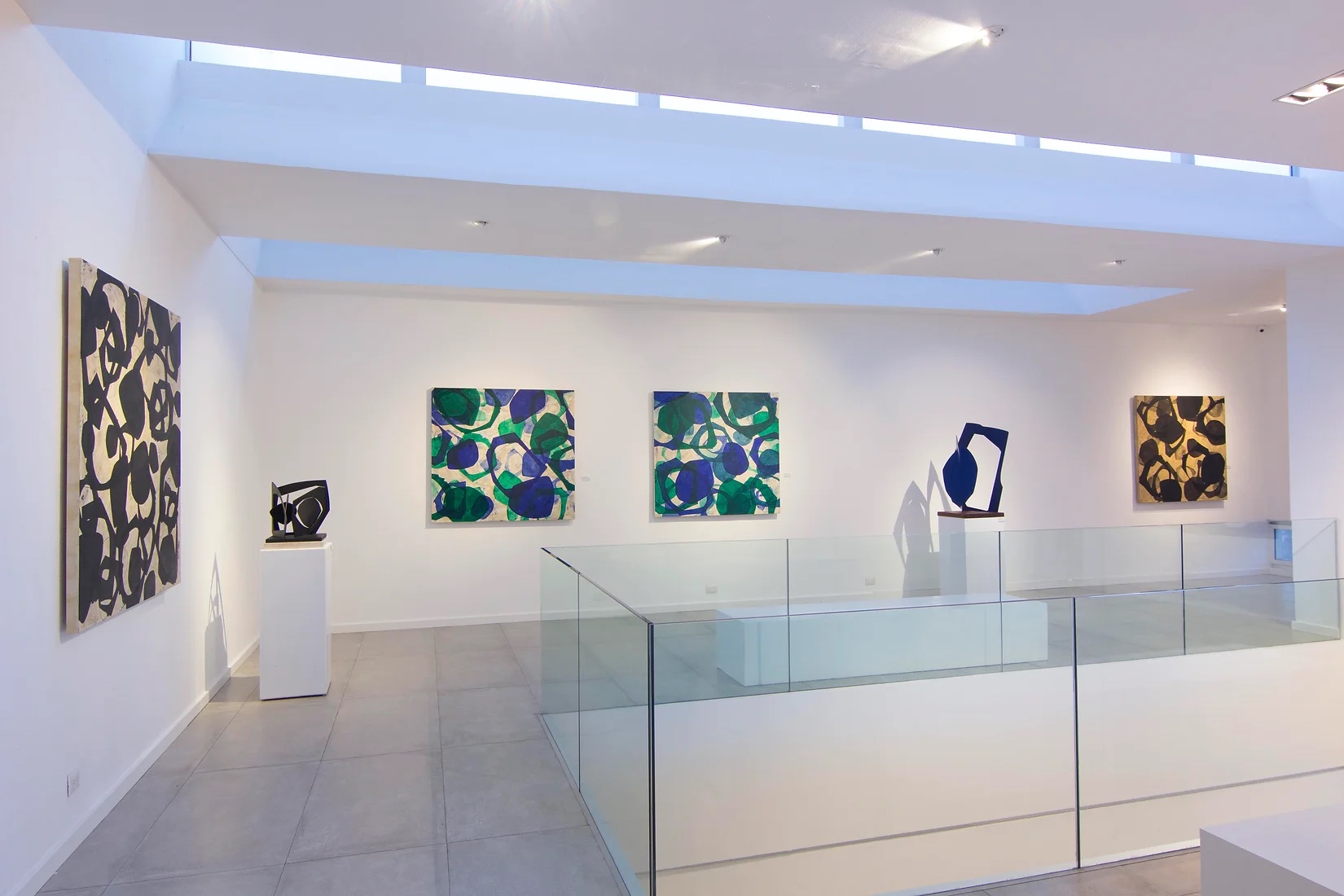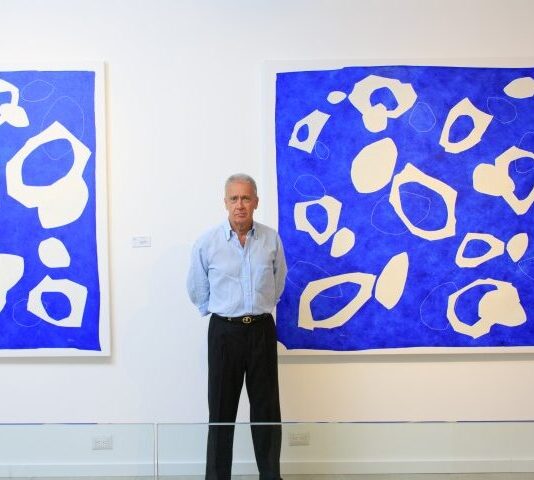He is an artist, scholar, and thinker, passionate about philosophy and music, whose values are reflected in his visual art—iconography and transcendent expression, sublime, mythical, and mystical inspiration. Beyond the work itself, and especially when he comments on it, his words convey an inescapable questioning and introspection.
A COMPLETE ITINERARY
Fernando Varela has always interrogated history, even the prehistoric, from palimpsests and sacred scriptures to the vicissitudes of the Caribbean, its islands, and its peoples. Death, life, and survival vibrate constantly in his work: a fundamental stage "touched ground," utopianly, for a safeguarded nature and a more just human condition, emphasizing women and men in perfect equality at all times. Thus, Fernando Varela's investigations have continued, encompassing perenniality: past, present, and induced future. He was even passionate about language, artistically exposing humanity's growing confusion in an unstructured or "Babelian" lettrism. Carol Damián points out: "Always seeking to understand how human beings share knowledge and express emotions, Varela explores signs, letters, and words and all their ramifications throughout time." The ontological trajectory signifies an unalterable commitment—in his work, the sign has replaced the object—spirituality, as a priority component, “constructs” a perpetual movement, capable of reinventing its own world and even the universe. His quests led him to develop “Origins and Primary Forms,” a sequence that Sara Hermann considered “two independent series that relate to each other (since) one can be considered the consequence of the other, continuity, but at the same time their absolute complementarity and parallelism can be considered.” Deciphering an unknown geognosy, Fernando Varela then conceived cellular phenomena and juxtapositions; the revisited morphologies underwent a fundamental metamorphosis! The abstract, difficult and fascinating ensemble, successfully presented in museums in Ecuador, as always combined ideology, craft, impeccable workmanship, and simultaneously dared to break the dominant aesthetic, replacing it with brutal and minimalist corporealities.
Fernando Varela recently exhibited these same origins and primary forms at the Museum of Modern Art, culminating in a spectacular installation, and part of the series that now unfolds in the spaces of ASR Contemporáneo.
FORM AND VOID
When we learned that Fernando Varela, immersed in his own past, found the evolutionary solution to his quest in a clipping and collage that his youngest daughter, then six years old, had given him—she herself inspired by her father's designs—the following came to mind: "La vérité sort de la bouche des enfants." In French, this saying is the same as in Spanish: "The truth comes from the mouths of children." And it has never been truer than in the graphic-pictorial discovery called "Forma y Vacío." Mónica, nor we, could have imagined that a childlike gesture, combining craftsmanship and affection, would culminate, five years later, in an impressive series. At once conceptual, spiritual, and tangible... like everything Fernando creates. A perfect metaphor for the fact that truth can come from the mouths of children.
The artist took the gift not only as a gesture of filial affection, sensitivity toward his work, and undeniably precocious skill, but it also struck him as a "revelation" that fit into his creative process, that is, the symbiosis of his spiritual effervescence and a resulting aesthetic in tangible dimensions. It was something comparable to the phenomenon of Grace, when an unknown manifestation has supernatural effects and leads us to the discovery of a new creed and an active faith.
Clara Caminero proposes a very good definition: “Marked by the dualism of oval and angular forms combined in a number of series, Varela’s work on canvas or paper continually explores formal relationships as bases of intellectual thought.”

